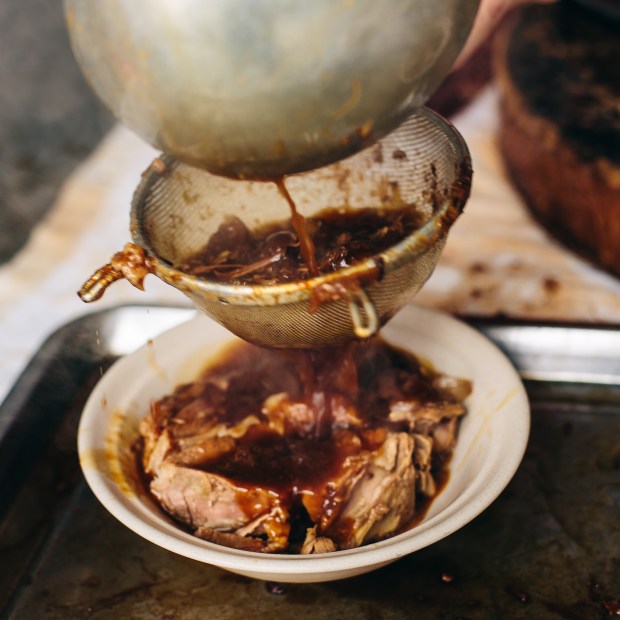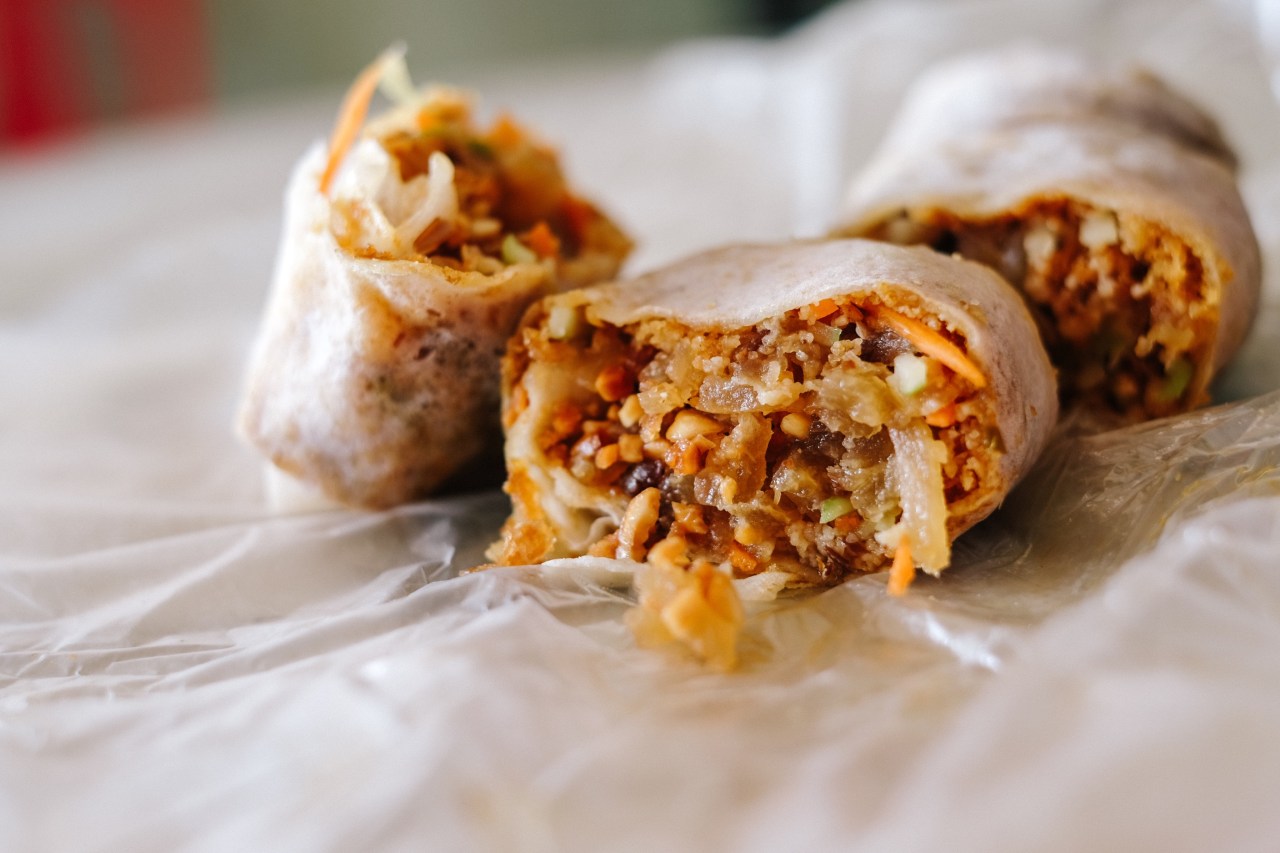As a vocal advocate of Malaysian food, I am often caught saying things like “Malaysia has the best food in the world.” I say it with certainty, without a doubt. But why? Why is Malaysian food so remarkable?
Malaysia is a Southeast Asian country made up of three major ethnicities—Malay, Chinese, and Indian—and the indigenous people of Peninsular Malaysia and East Malaysia, as well as the Peranakan and Eurasian communities. Malaysian food is the evolution of food cultures and influences from the different threads woven into the fabric of our history. Many would view this culture of borrowing as offensive, but I have never perceived it that way. We are a young country, albeit with a long and complex history on the lands we call home. Our language, Bahasa Melayu (Malaysian), is borrowed, incorporating regional languages over thousands of years. Our culture, often revolving around ethnicity, originates from other locales. Even the core of our governmental system is borrowed and fashioned after the Westminster parliamentary system, a residual effect of British colonialism. We have learned to borrow—sometimes to good effect, sometimes with detrimental results (read: politics).
When it comes to our food, I thank the glittering gods in the sky for this culture of “borrowing.” People often try to explain or define Malaysian food, but there’s a certain je ne sais quoi to our food that makes it impossible to do so. No matter what the food is or where it’s from, once it’s adapted to the Malaysian flavors, the food evolves. It’s strong—never shying away from bold tastes, like a peacock showing off its glorious tail. It’s complex—there’s a deep history to it all. And it’s diverse—there’s a delicate balance of flavors, walking a tightrope of spicy, sweet, salty, and sour.
In Malaysia, food is cheap. Good food, that is. A well-balanced diet of fresh ingredients is not expensive or hard to find in Malaysia. As a student, I spent years in Canada, where cheap food was often fast food: processed with too much sugar and salt, too many chemicals and additives, and definitely too much fat. That’s cheap food in a lot of countries. But here even a 4-ringgit ($1) bowl of noodles is satisfying.
Food is an experience: a culinary journey through time and history, an experience of all those before you and around you who have influenced it. Our food is in general the culmination of the spice trade that thrived centuries ago, fused with elements from Sumatran and Javanese cuisines. Our Chinese food is Cantonese-centric. Our Indian food is mainly South Indian: spicy, rich, and decadent. When it all comes together in a wok, a pot, or a pan, something truly remarkable happens, something of which Malaysians can and should be proud.
Bak kut teh

Bak kut teh is made with pork bones, simmered in a clay pot with a rich, complex mix of herbs and spices: Star anise, cinnamon, cloves, fennel seeds, garlic, female ginseng, Solomon’s seal, Chinese licorice, milk-vetch root, poor man’s ginseng, Szechuan lovage root, wolfberries, and white peppercorn all find their way in. The result is a unique flavor, something a few words strung together into sentences could never describe.
Bak kut teh is traditionally served with white rice, you char kuay (fried breadsticks), and a pot of hot Chinese tea. At traditional bak kut teh joints in Malaysia, there is usually a selection of lighter to heavier teas available. My personal favorite is tie kuan yin, a variety of oolong tea that’s harsh and heavy. It’s a stubborn sort of tea that’s a foil for the herbal, meaty essence of the dish.
The origin of bak kut teh is a little fuzzy. It is most likely a modified broth from the Fujian province of China, into which Hokkien migrants incorporated local Malaysian ingredients. Legend has it that laborers at Port Klang, who started work as early as 3 or 4 in the morning, would leave the pot simmering for hours. They used cheaper cuts of meat, like knuckle or offal. It would be ready just in time to get in a hearty late-morning meal before resuming their backbreaking work.
I like everything about bak kut teh. On a culinary level, it’s a remarkably intricate dish that has evolved over generations of migration. The flavors are bold yet subtle—a contradiction that excites and enchants the taste buds. On a social level, eating this dish is an opportunity for good friends to share a pot of good food, recounting stories from weeks, months, and years past. On a cultural level, it’s a journey through time into the story of hardworking migrants.

Popiah
“What I love most about Malaysian food is that there are no rules when it comes to eating times. It’s all very flexible. There are no labels like breakfast, lunch, or dinner. If you are craving a particular food, chances are you would find it any time of the day. It’s beautiful. And to a certain extent, it’s liberating.” Until a friend on a visit from Brazil made this comment, this aspect of Malaysian food culture wasn’t obvious to me. I guess you tend to take these little blessings for granted until an outsider reminds you.
One such food that we eat anywhere, anytime is popiah, a soft, thin, paperlike wheat-flour pancake. There are numerous takes on popiah, but the most prominent in Malaysia is probably the Nyonya version. Its filling consists of jicama, fried bean curd, carrots, and shrimp, held together with a paste made from hoisin sauce, chili paste, and pureed garlic.
Popiah originated from the Fujian province, and it is found in many Asian countries, including Taiwan, Singapore, and Thailand in addition to Malaysia. The Nyonya popiah has heavy Peranakan (locally born Chinese) influences. The balance of textures and flavors is mathematical perfection. While doing research on the ingredients, I was shocked by the list. It doesn’t make sense. The combination of jicama, shrimp, and carrots cooked down shouldn’t work—especially when laid out on a flour sheet with a paste of hoisin, chili, and garlic and folded into a burritolike shape. There’s a certain madness to it, but it works. It just works. And that’s what makes popiah so special. Every bite into one is exhilarating. It’s one of the reasons I love Malaysian food in general: the boldness of it all.
Roti canai

My dad absolutely loves roti canai. So does my mom. My brother loves a good roti canai in the morning, especially with a side of really good dhal. To say my British wife, Charlie Morgan, is obsessed with roti canai is an understatement—she eats it every day. My colleagues love roti canai at almost any time of the day. I have conversed with every single one of my friends over a plate of roti canai. The truth is I have yet to meet a Malaysian who doesn’t like the dish.
Roti canai is thinly stretched flatbread, made with the simplest of ingredients: flour, water, and ghee (clarified butter). It was introduced to Malaysia in the early 1900s, when it was still a British colony. By the 1920s, the Tamil Muslims who invented and brought this form of roti were peddling it across Peninsular Malaysia. India still has its variation, the paratha, and it’s available all across the country.
Once kneaded, the dough is flattened and folded repeatedly. Through a little skill and showmanship by the vendor, the folding allows the dough to develop its fluffiness. It is then thrown onto a flat iron skillet until crispy and golden brown. It is usually served with a side of dhal or a succulent chicken or fish curry. The charm of this versatile bread has seen its fair share of evolution, for better or for worse. These days roti canai is served with fillings such as egg, onions, sardines, margarine, sugar, kaya (coconut jam), banana, and even Milo, the popular powdered-chocolate-and-malt drink.
My personal favorite is roti banjir, literally “flooded bread.” I think I grew fond of this simple version, which is chopped up and drowned in dhal, because of the efficiency and the minimalism of it. I don’t have to get my hands dirty tearing the bread apart, and I don’t have to wonder to myself, How much gravy is too much gravy?
It’s crispy. It’s fluffy. It’s soft. It’s breakfast. It’s lunch. It’s dinner. It’s everything in between. It’s comforting. It’s home. Without a doubt, roti canai is the quintessential Malaysian food.
Yong tau foo

Hakka are proud people. They are proud of their heritage, their language, their history, and, most important, their food. The Chinese characters for Hakka—客家—translate literally to “guest families.” In a series of mostly forced migrations over the centuries, the Hakka people have had to endure many hardships, and that resilience still defines who they are today.
Yong tau foo came about when the Hakka people found themselves in southern China, where they lacked the wheat required for the wrappers used to make traditional dumplings. Instead, they stuffed tofu with ground pork. Later, when they migrated to Malaysia, they replaced ground pork with fish paste and began experimenting with local vegetables such as chili, bitter gourd, eggplant, and okra. The fish paste is traditionally prepared by using a pestle and mortar to work the fish meat—usually ikan parang (wolf herring) or ikan tenggiri (Spanish mackerel)—into a bouncy paste.
True to the Hakka principle of versatility, yong tau foo can be served deep-fried, braised, or in a broth, with a side of rice or noodles, or just by itself. Some think there should be more to this meal, but simplicity really is the key to Hakka cuisine. Often dismissed as seemingly elementary, it carries with it a distinct flavor, forged through centuries of struggle and strengthened by the profound belief that no person is too small to change the world.
You char kuay
“I’ve turned down offers for tens of thousand of ringgits to teach how to make these pastries, but I will only do it if the person will respect the heritage of the food. I’ve been making these snacks for over 30 years, and I never forget where they come from—where I come from. The history of these pastries is intertwined with the history of China, the Chinese people. It’s now part of the Malaysian culture, and I have to make sure that I pass this knowledge on to my children.” Mr. Lau speaks with pride as he tends with care to the pastries slow-frying in a giant wok.

Originating in China, you char kuay (Chinese cruller) is a long strip of deep-fried dough. There isn’t much difference between the ones you find on the streets of China and those you find in Malaysia. They are lightly salted, crispy on the outside with a wonderment of fluffiness on the inside. The golden-brown skin indicates the perfect alchemy of flour and hot oil. Traditionally consumed during breakfast or tea time, you char kuay is also served with bak kut teh or rice congee. Venture into any Chinese neighborhood in Malaysia and chances are you will spot a stall selling these deep-fried dough treats. Sold alongside them are other common Malaysian-Chinese deep-fried pastries such as ham chim peng—red-bean paste in dough—and jian dui—glutinous rice balls.
My fondest memory of the Chinese cruller is sitting atop the kitchen counter as a child, observing my Hokkien grandmother slice the sticks into quarters and stuff them with minced pork before dropping them into the wok for a quick fry. It was unhealthy, some would say unholy. Yet it was the Hokkien version of paradise. The love of all things pork in Hokkien culture inspires culinary greatness.